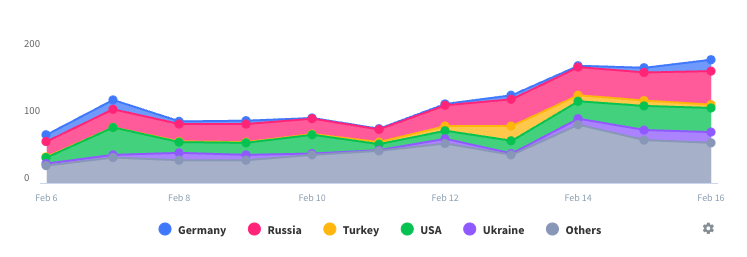Beschreibung
In addition to The S.T.A.B.L.E. Program Module Guidelines: Sugar, Temperature, Airway, Blood pressure, Lab work, Emotional support for the family, this app includes a BONUS menu of 22 severe cardiac anomalies to increase understanding of how blood flows through the heart in the setting of ductal dependent and not ductal dependent congenital heart disease (CHD).
- 4 calculators: corrected gestational age, temperature converter (Fahrenheit to Celsius and vice-versa), umbilical artery and venous catheter insertion depth, weight converter (grams to pounds/ounces and vice-versa).
- Under Cardiac Anomalies you’ll find animations and information on 22 severe forms of congenital heart disease. The MP4 videos demonstrate how blood flows through the heart with the various forms of CHD, and for ductal-dependent lesions, the severe impact of ductal closure on blood flow. Other animations feature normal heart anatomy, hypercyanotic (tet) spell, and balloon atrial septostomy (Rashkind procedure). Also included are illustrations of palliative procedures (PDA stent, balloon valvuloplasty, BT shunt, RVOT stent, central shunt, pulmonary artery band).
STABLE stands for the 6 assessment and care modules in the program: Sugar, Temperature, Airway, BP, Lab work, Emotional support. This app includes the following items:
- Sugar module: General Guidelines for sick infants and infants at increased risk for hypoglycemia, IV treatment of a blood sugar less than 50 mg/dL (2.8 mmol/L), useful information about umbilical catheters and actions to correct umbilical artery catheter malpositions.
- Temperature module: General Guidelines (hypothermic classifications, monitoring, rewarming after accidental hypothermia), and neuroprotective hypothermia checklist and neurologic exam.
- Airway module: monitoring guidelines, respiratory distress descriptions, endotracheal tube sizes and insertion depth, blood gas evaluation, signs of a pneumothorax, and treatment of a pneumothorax.
- Blood pressure module: assessment for shock and treatment of shock, including how to mix dopamine hydrochloride to constitute an 800 microgram/mL IV fluid solution.
- Lab work module: risk factors for neonatal infection, clinical signs of infection, and laboratory evaluation prior to transport to an intensive care unit. How to calculate the absolute neutrophil count and immature to total ratio.
- Emotional support for the family module: the various emotions that parents may be experiencing and how to help families who are experiencing the crisis of a sick newborn.
The Cardiac Anomalies menu includes short descriptions and MP4 videos and illustrations for:
- Normal Heart and Lungs
- Aortic Valve Stenosis
- Atrial septal defect
- Atrioventricular canal
- Coarctation of aorta
- Double outlet right ventricle
- Ebstein anomaly
- Hypoplastic left heart syndrome
- Interrupted aortic arch – type B
- Patent ductus arteriosus
- Pulmonary atresia with intact ventricular septum (IVS)
- Pulmonary atresia with IVS and sinusoids
- Pulmonary atresia with ventricular septal defect
- Total anomalous pulmonary venous connection (TAPVC) – Cardiac, Supracardiac, Infracardiac)
- Tetralogy of Fallot (moderate stenosis)
- Tetralogy of Fallot (ductal dependent)
- Transposition of the Great Arteries
- Tricuspid atresia
- Truncus arteriosus
- Ventricular septal defect
Includes illustrations of palliative procedures: balloon atrial septostomy (Rashkind procedure), PDA stent, balloon valvuloplasty, Blalock-Taussig (BT) shunt, right ventricular outflow tract (RVOT) stent, central shunt, pulmonary artery band.
Ausblenden
Mehr anzeigen...


















